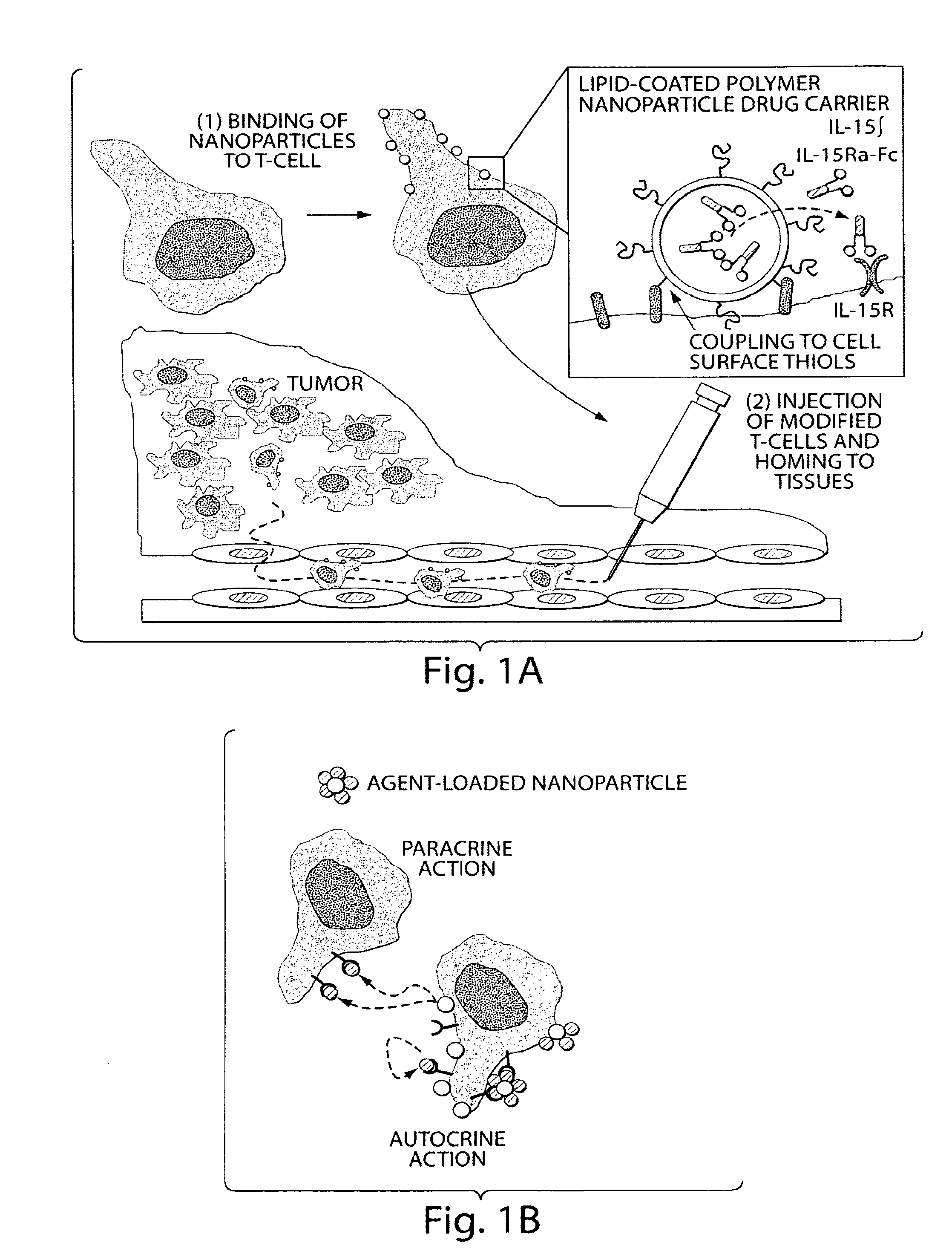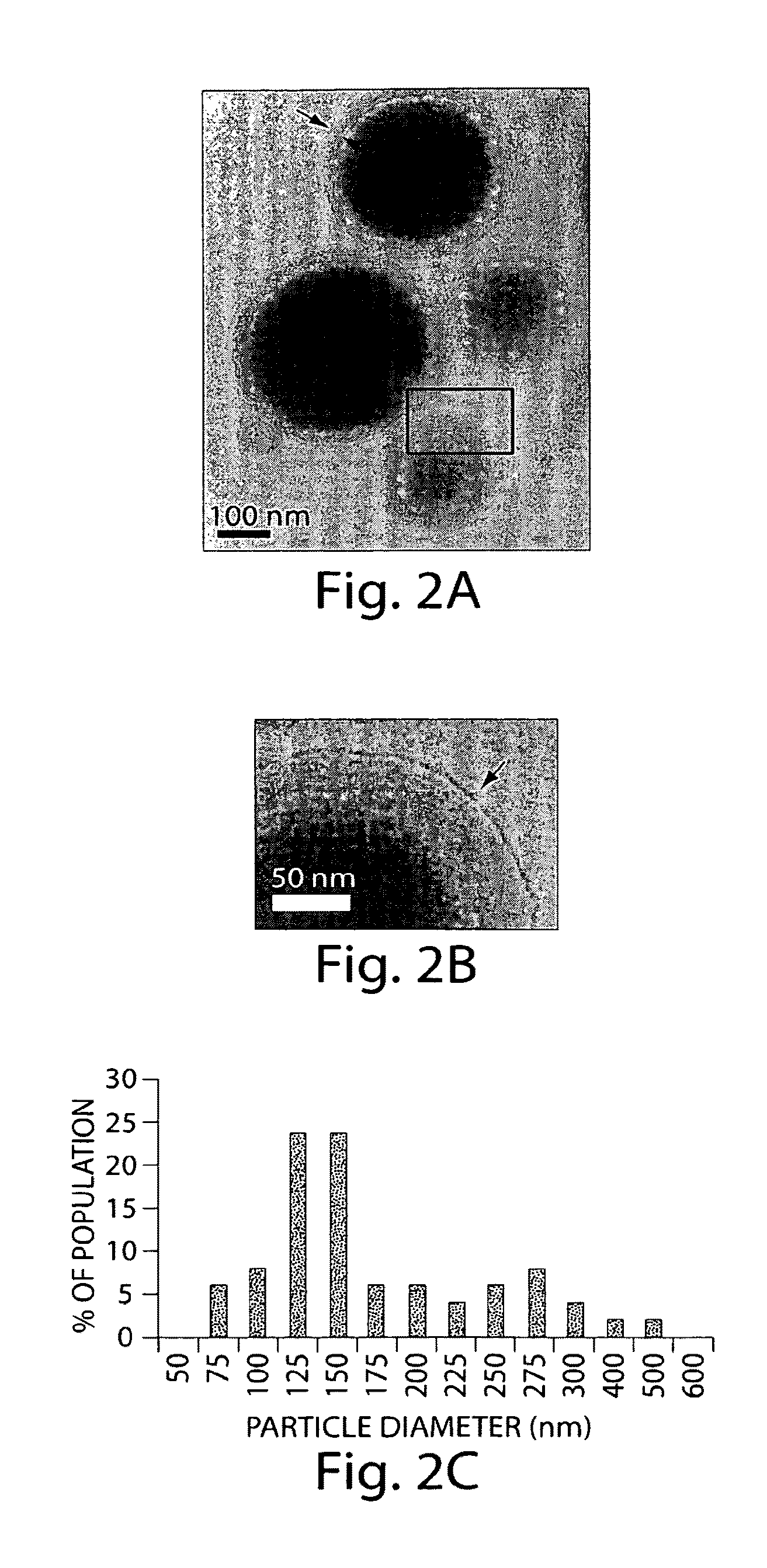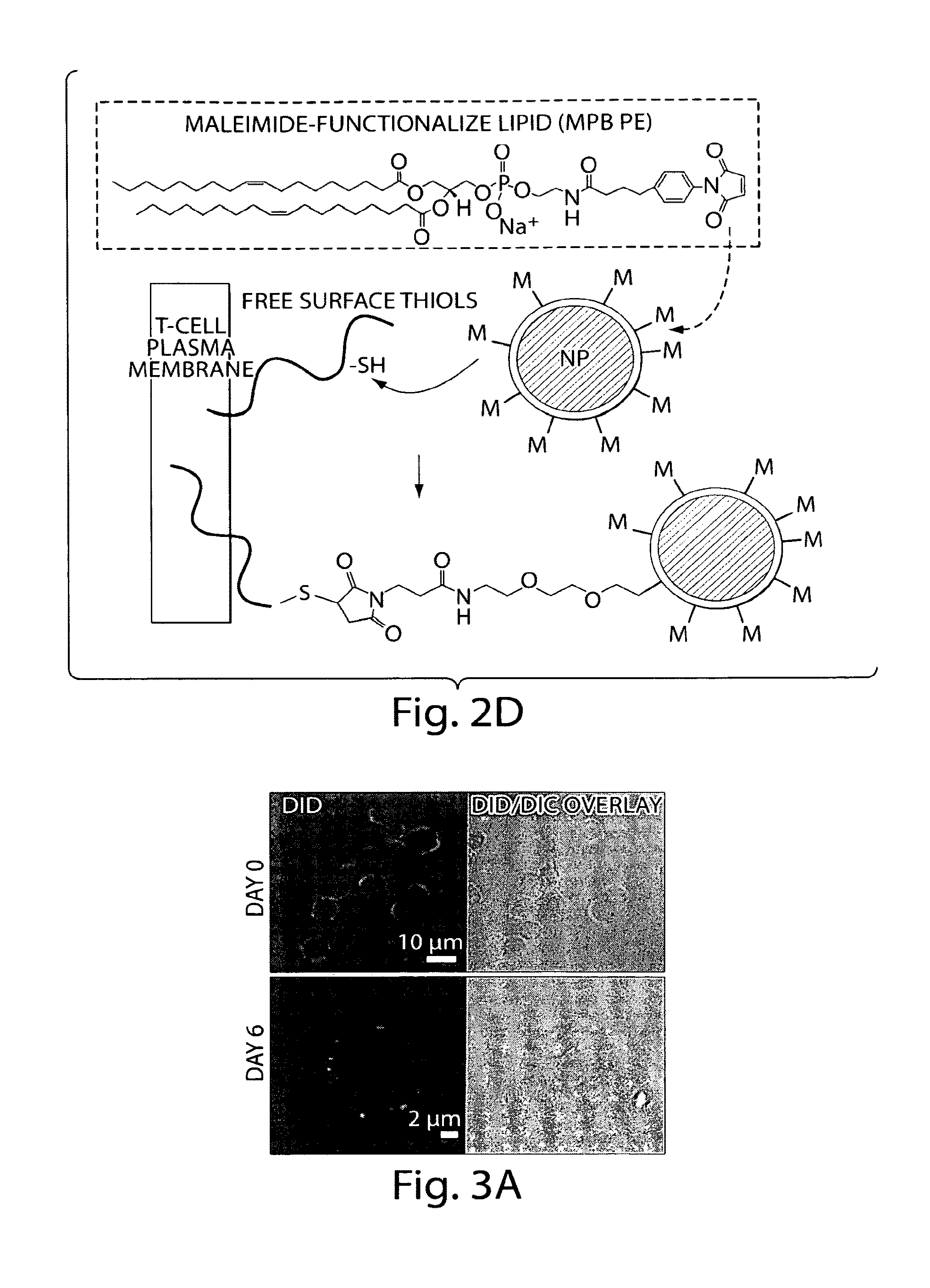Methods and compositions for localized agent delivery
a localized agent and composition technology, applied in the field of localized agent delivery, can solve the problems of reducing the effect of toxicity, reducing the risk of infection, and reducing the half life of 1 hr, so as to facilitate conjugation and reduce the risk of infection.
- Summary
- Abstract
- Description
- Claims
- Application Information
AI Technical Summary
Benefits of technology
Problems solved by technology
Method used
Image
Examples
example 1
Nanoparticle Synthesis, Characterization and Conjugation to T Cells
[0172]1.1. Nanoparticle Synthesis. We recently developed a strategy to prepare ‘lipid-enveloped’ biodegradable polymer nanoparticles. (Bershteyn A et al., Soft Matter 4: 1787, 2008.) These particles have a biodegradable poly(lactide-co-glycolide) core and a surface coating of a phospholipid bilayer (FIGS. 2A and B, arrows). These nanoparticles can encapsulate drug molecules in their core and / or incorporate drugs in the surface lipid bilayer, enabling sustained release of proteins, peptides, or small-molecule compounds. Nanoparticles were synthesized by a double emulsion / solvent evaporation process: 200 μL water was emulsified in 1 mL chloroform containing 2 mg of a lipid mixture (4:1 mole:mole DOPC:DOPG with varying quantities of dioleoyl maleimidophenyl phosphoethanolamine (MPB PE), with or without 25 μg 1,1′-dioctacdecyl-3,3,3′,3′-tetramethylindodicarbocyanine (DiD) or DiR lipid-like fluorescent dye (Invitrogen)) a...
example 2
Assessment of Nanoparticle Binding on T Cell Functions
[0185]2.1. Nanoparticles Bound to Cells Do Not Block Antigen Recognition or T Cell Proliferation. Having found that thiol coupling allowed stable non-toxic linkage of nanoparticles to cells, we next sought to determine whether the coupling reaction interfered with T cell behavior, and to find what dose of nanoparticles could be attached to T cells without blocking key T cell functions. We first tested whether T cell proliferation was impacted by nanoparticle coupling. Pmel-1 T cells were primed / expanded in vitro with anti-CD3 / anti-CD28 beads and IL-2 as described above. The expanded cells were labeled with carboxyfluorescein succinimidyl ester (CFSE), and incubated with 2500 DiD-labeled lipid-coated PLGA nanoparticles per cell for conjugation. In parallel, day 6 bone marrow-derived dendritic cells from C57Bl / 6 mice prepared as described (Stachowiak et al., J Immunol 177(4): 2340, 2006) were activated by incubation with 1 μM CpG o...
example 3
Cytokine / Drug Loading in Lipid-Coated PLGA Nanoparticles
[0190]Nanoparticles are conjugated to ACT T cells in two different ways: (i) nanoparticles are loaded with cytokines designed to act on the carrier T cells themselves to support their proliferation, survival and effector function (e.g., IL-15 superagonist) or (ii) nanoparticles will be used to deliver compounds designed to act on other cells in the microenvironment, including Toll-like receptor (TLR) ligands and vaccine antigens (e.g., imiquimod or MPLA). In the previous studies, ‘empty’ nanoparticles were used to assess the impact of particle conjugation on T cell functions. Here we tested the encapsulation / incorporation of proteins (e.g., IL-15 superagonist) and TLR ligands into the nanoparticles, in order to deliver therapeutically relevant cargos.
[0191]PLGA nanoparticles have been explored in numerous prior studies as vehicles for encapsulation and delivery of proteins, peptides, and small molecule drug compounds, and notab...
PUM
| Property | Measurement | Unit |
|---|---|---|
| diameter | aaaaa | aaaaa |
| half life | aaaaa | aaaaa |
| half life | aaaaa | aaaaa |
Abstract
Description
Claims
Application Information
 Login to View More
Login to View More - R&D
- Intellectual Property
- Life Sciences
- Materials
- Tech Scout
- Unparalleled Data Quality
- Higher Quality Content
- 60% Fewer Hallucinations
Browse by: Latest US Patents, China's latest patents, Technical Efficacy Thesaurus, Application Domain, Technology Topic, Popular Technical Reports.
© 2025 PatSnap. All rights reserved.Legal|Privacy policy|Modern Slavery Act Transparency Statement|Sitemap|About US| Contact US: help@patsnap.com



